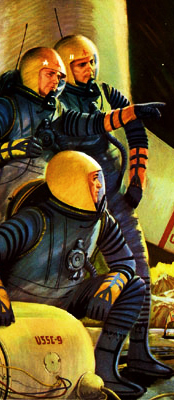On July 20, 1976, I was a student intern on the Viking mission to Mars at the Jet Propulsion Laboratory in Pasadena, California when Viking 1 made history’s first successful landing on the Red Planet. I was a member of the Lander Imaging Team, which was responsible for the lander’s twin cameras. The team leader, Dr. Thomas Mutch, was my professor at Brown University, and was a tremendous influence on me and countless other students. I wrote about him, and the incredible moment when humans saw the first picture from the Martian surface, in my book A Passion for Mars:
Dr. Mutch has already taken his place in the Blue Room next to Al Hibbs, the JPL engineer who serves as on-camera commentator for the mission. When the picture comes in – if it comes in – Dr. Mutch will describe what he sees, much as Neil Armstrong did as he took his first steps on the moon, seven years ago today. Up here in the imaging team area, Steve Saunders – one of Dr. Mutch’s former grad students, now a JPL planetary geologist – will be able to communicate with him over a headset. If Dr. Mutch needs any help from him and the other team geologists with interpreting the image, they’ll be ready.
At 5:54 am, we stare at the blank screen before us. Suddenly, five lines of image data appear along the left edge, scrolling down from top to bottom as if they are being dragged by a fast-moving squadron of ants. For a moment, time stops; we are electrified. We stare at this bright sliver of the Martian surface, letting the reality sink in. After many long seconds, five more lines scroll down, adding to the image. Suddenly we recognize sunlit forms: There are rocks on the surface. Five more lines, then five more. Slowly, the picture continues to build up: A window opening on a new world. The view is astonishingly clear, much better than the crude, pixilated image of Venus from the Soviet lander. It has much of the clarity and nuance of a professional photograph. In the Blue Room, Dr. Mutch can only utter exclamations of surprise and joy. Steve Saunders, conscious of the waiting world, speaks into his headset: “Say something, Tim.”
“Yeah, I’m supposed to say something at this point,” is the response from the Blue Room. He struggles to communicate. “I’m just – I just – I just don’t feel like talking.”
“Well, there are rocks,” Al Hibbs prompts.
“There are rocks, yes. There’s rocks, and, uh, there’s sediment, but it’s just incredible to see that Mars, you know, is really there.” Finally Dr. Mutch overcomes his own reticence and describes what he is seeing. He speaks in that clear, professorial tone I’ve heard many times before, but there’s something else mixed in, a trace of boyish enthusiasm that hints at the excitement underneath. No human has seen what he is seeing at this moment. With the world looking over his shoulder, my professor and advisor – this string-bean of a man with tortoise-shell glasses and unruly hair – is exploring the surface of Mars.
No one could blame Tim Mutch for not wanting to talk. The wonderful surprise, as he beheld the first image from Viking Lander 1, was not only that there was an image, but that it was as good as anyone could possibly have hoped. Even the exposure settings were perfect. His people had painstakingly calculated those settings years before, and they’d been right on the money. Sitting in the Blue Room with the world listening, however, Mutch was reluctant to jump the gun and announce that they had a superb picture before he was really sure they did. But as the image slowly built up into an elongated swath of Martian ground, Mutch knew they had really done it. Already he could see some details that reminded him of lunar scenes, like sharp-edged boulders that were probably blasted out of distant impact craters, and others reminiscent of desert landscapes on Earth, like tails of apparently windblown sediment behind rocks. The camera not only worked, it worked incredibly well.
That was apparent to everyone, not just the geologists, when the lander’s footpad began to appear; the familiar bowl-shaped pad was so clear that you could count the rivets. By that time Mutch was already impatient to see the next image, the one they called the survey. For this one, the camera would switch to a wider field of view and scan the ground from 20 degrees above the horizon to 40 degrees below it, across an arc as much as 200 degrees wide – or, if they were very lucky with the lander-to-orbiter relay link, even more. Based on what he saw in the first close-up, Mutch figured the survey image was going to be, as he told Al Hibbs, “mind-boggling.”
He was right. From the very first strip of data, the survey image was spectacular. In the distance Mutch could see what appeared to be drifts of sediment, snaking toward the horizon in the late-afternoon sunlight. Above, the sky was not the near-black canopy everyone had expected, but a surprisingly bright expanse – probably due to scattered light from airborne dust – that gave the whole scene a startlingly Earthlike feel. On the horizon there were fascinating details including ridges and hills that might be distant crater rims. And everywhere, there were rocks. They were scattered across the scene in all sizes and shapes, mute witnesses to eons of Martian evolution. This was a geologist’s paradise. “Just lovely,” he said quietly. “Just lovely.” Mutch could hardly believe that after eight years of struggle everything had turned out this well. Gazing at the unfolding panorama, he felt the same elation that comes from reaching a lofty and difficult summit. He had only one frustration: He wished he could get out of his chair, walk into the scene, and really explore it.
{ 1 comment }









